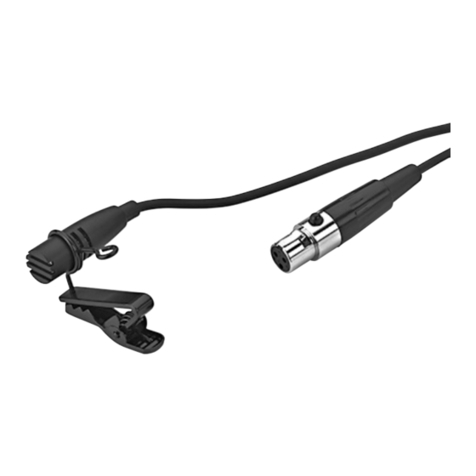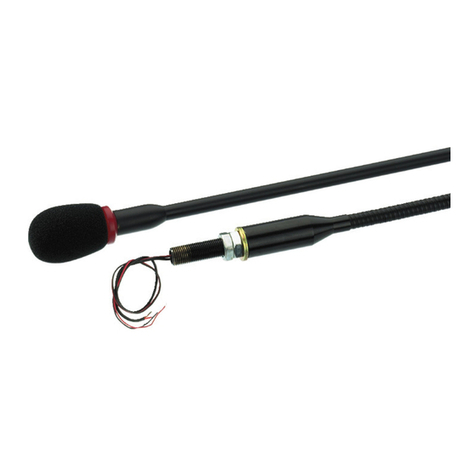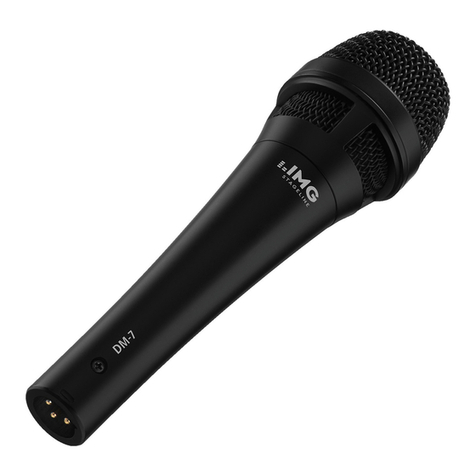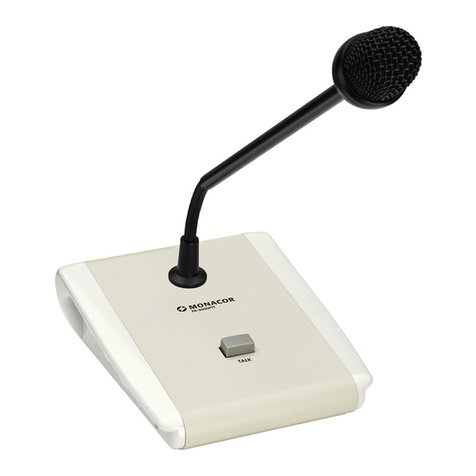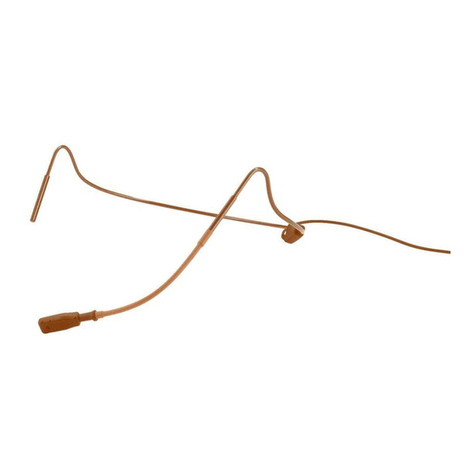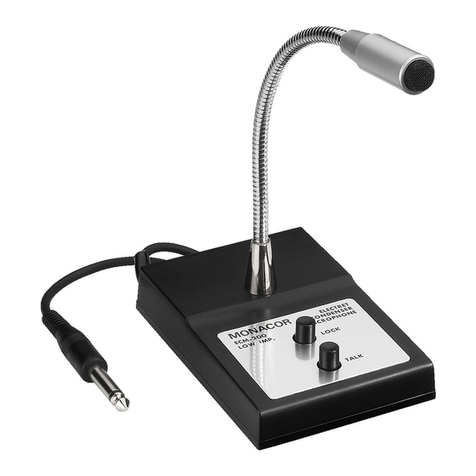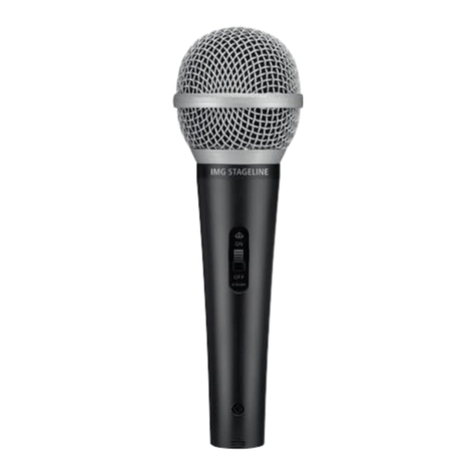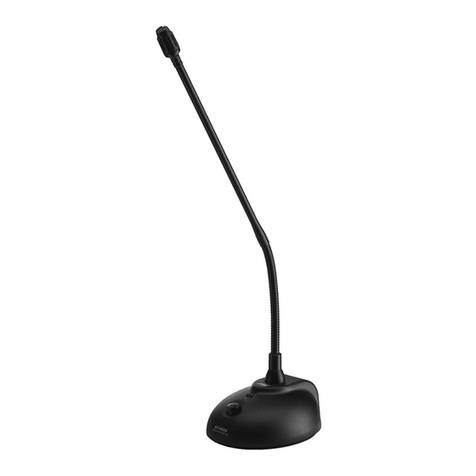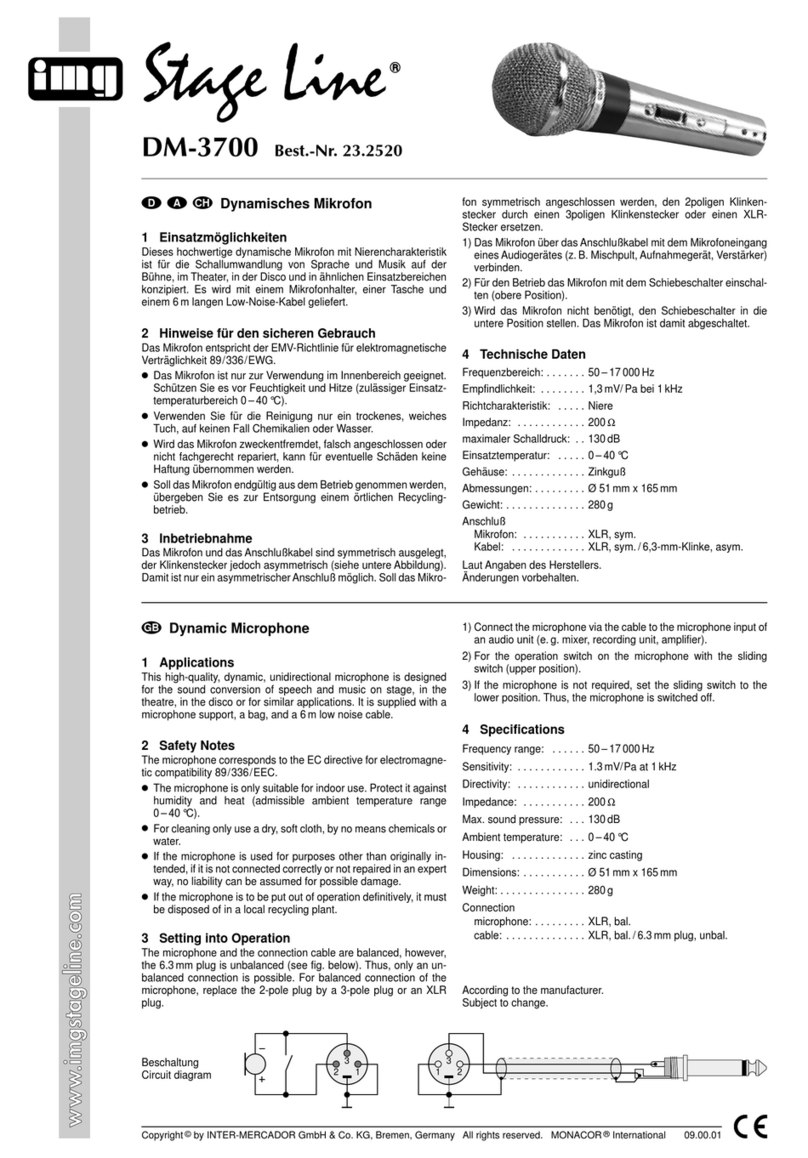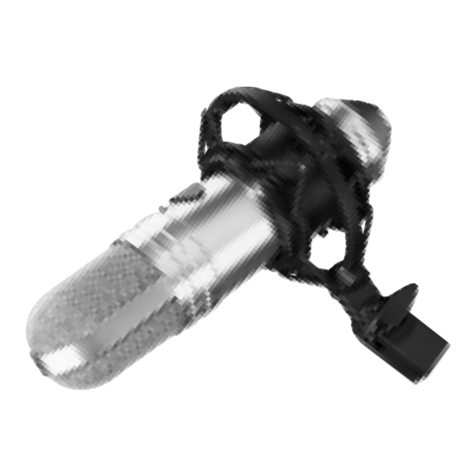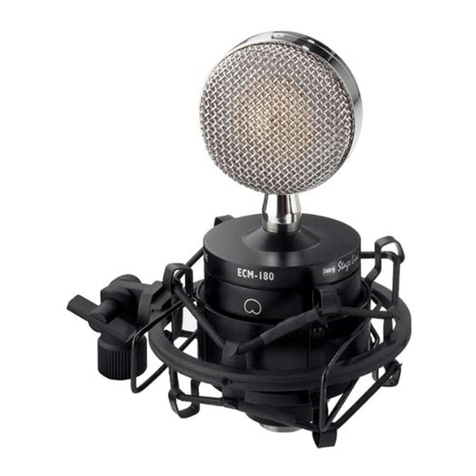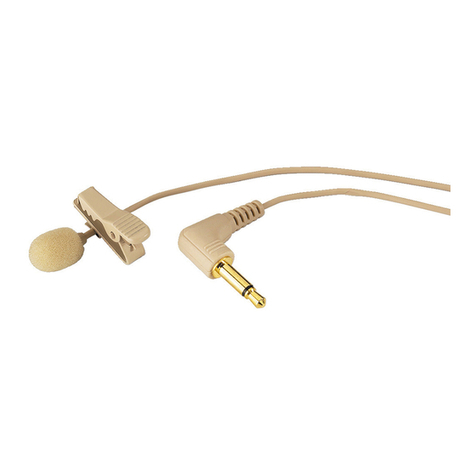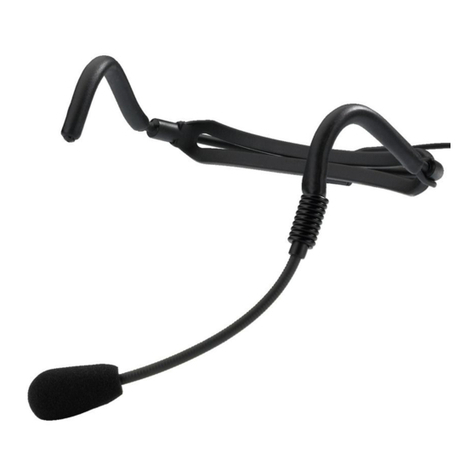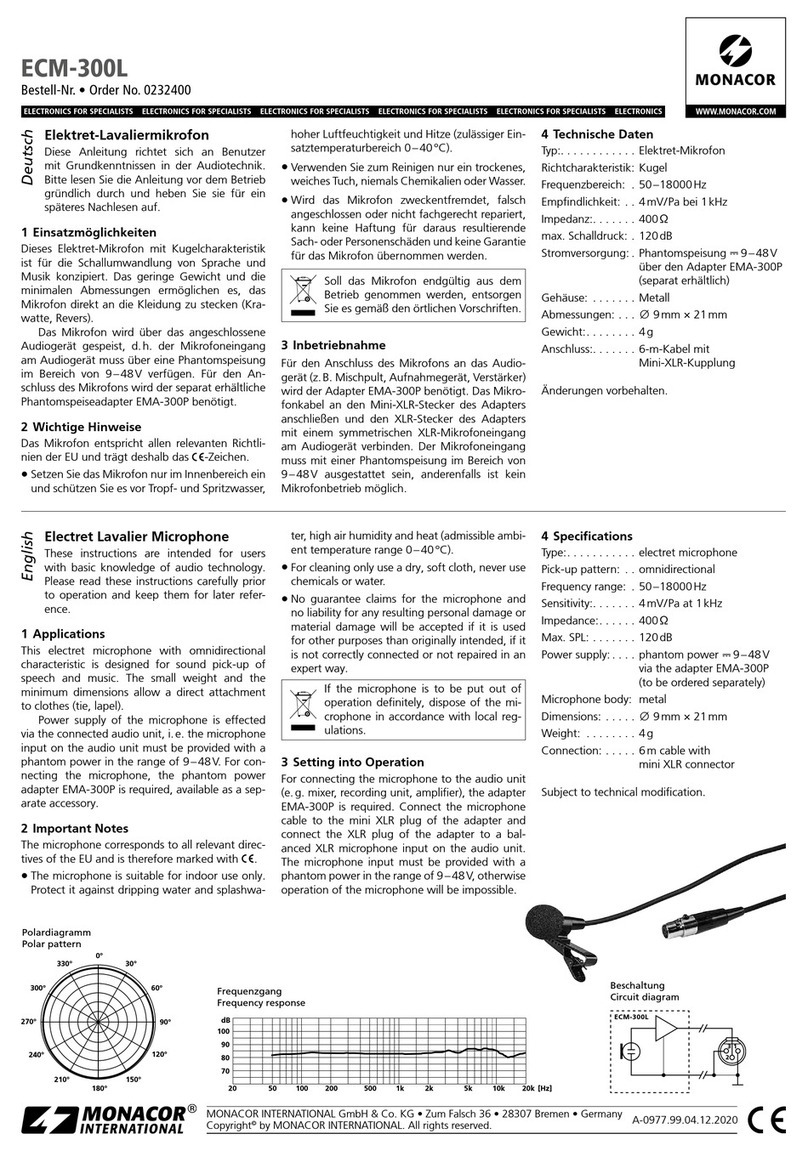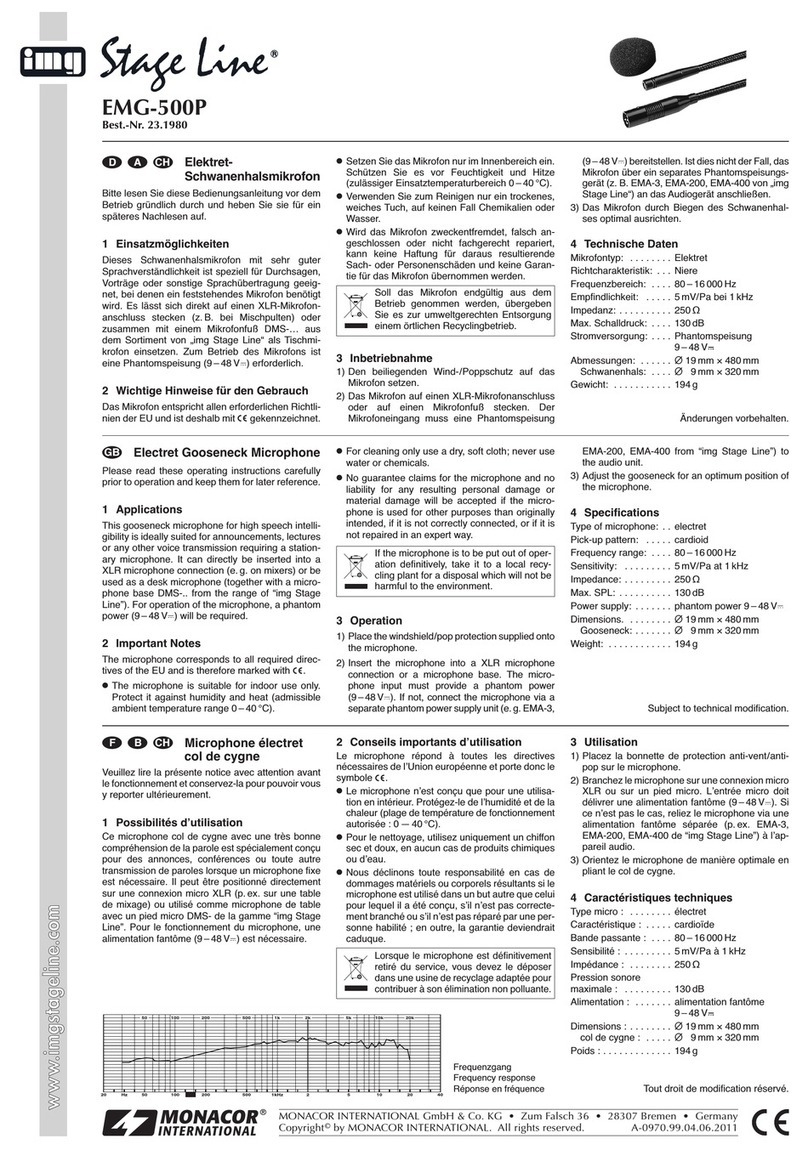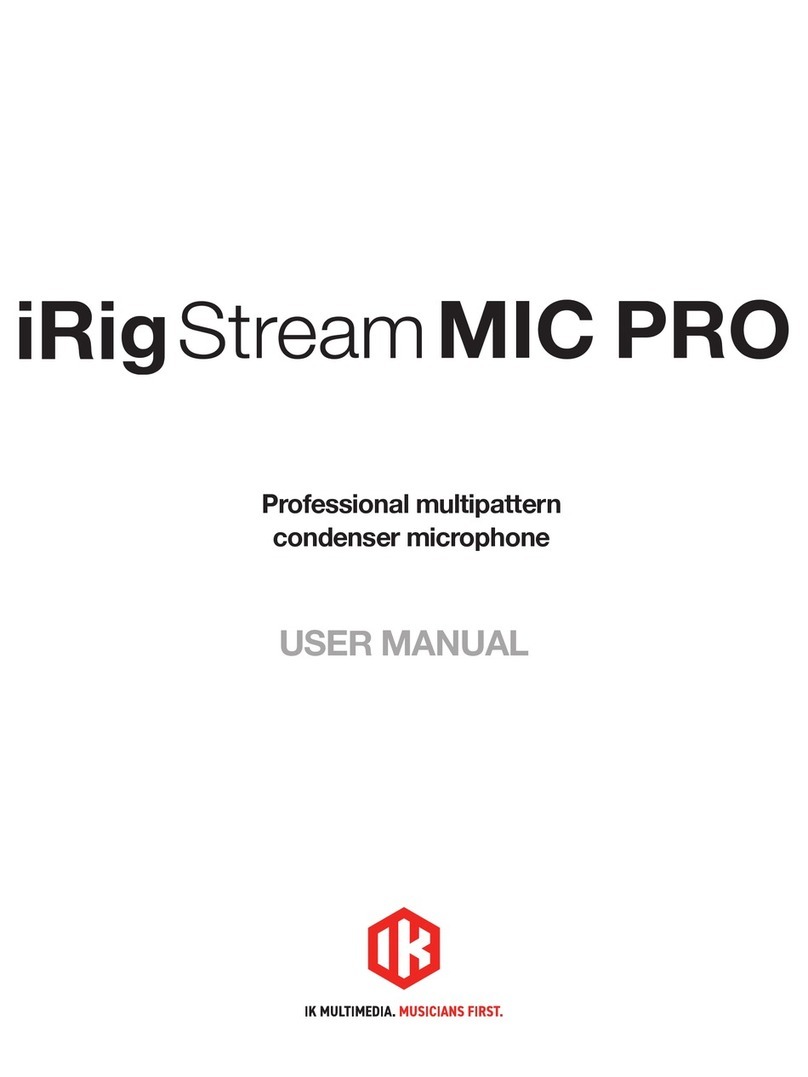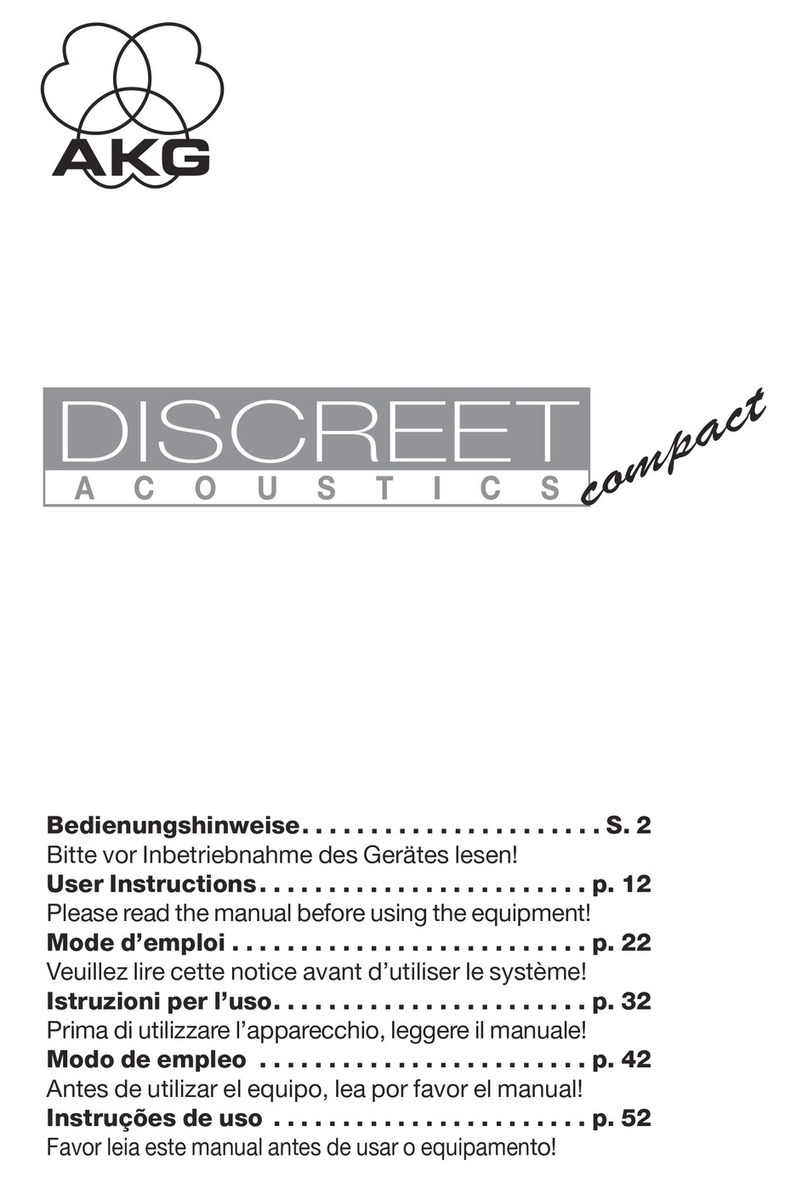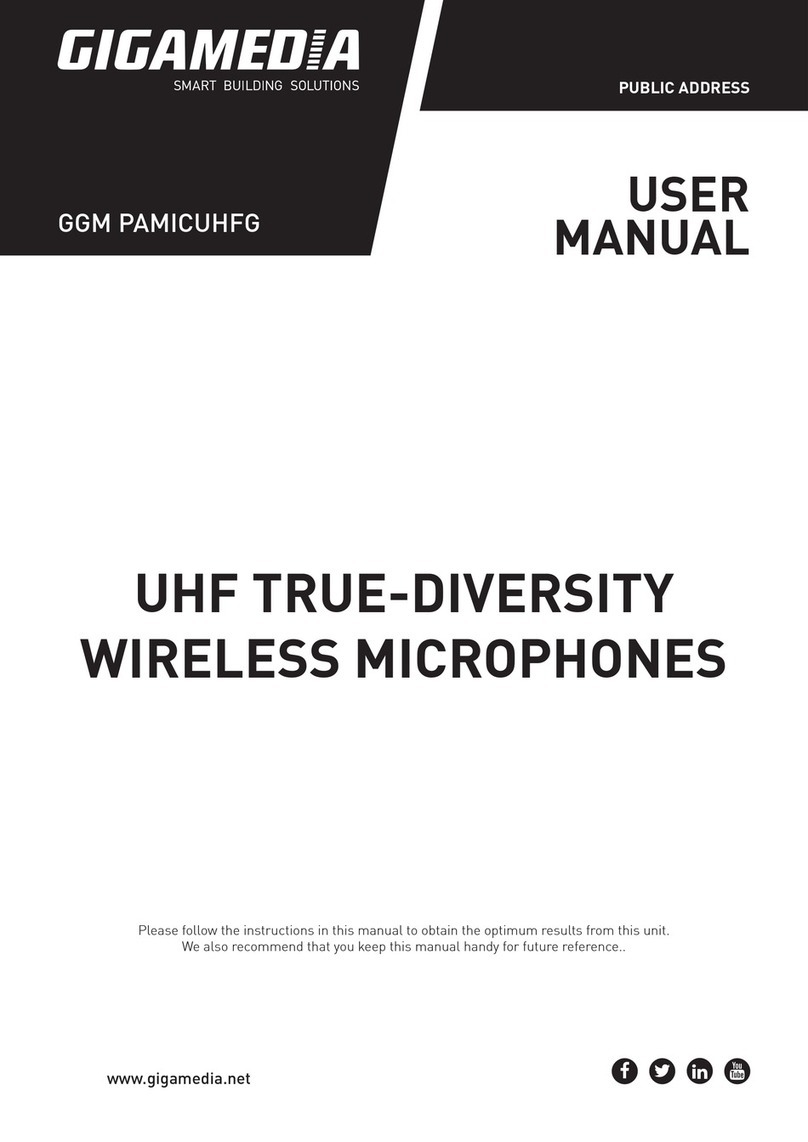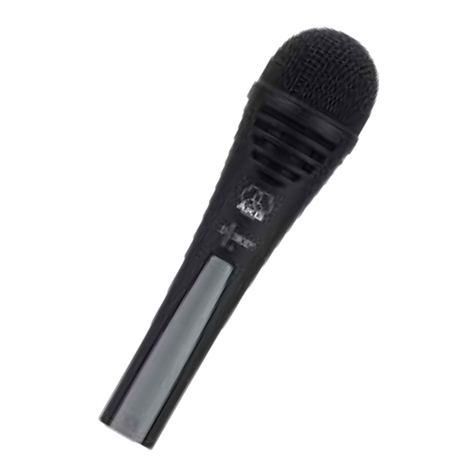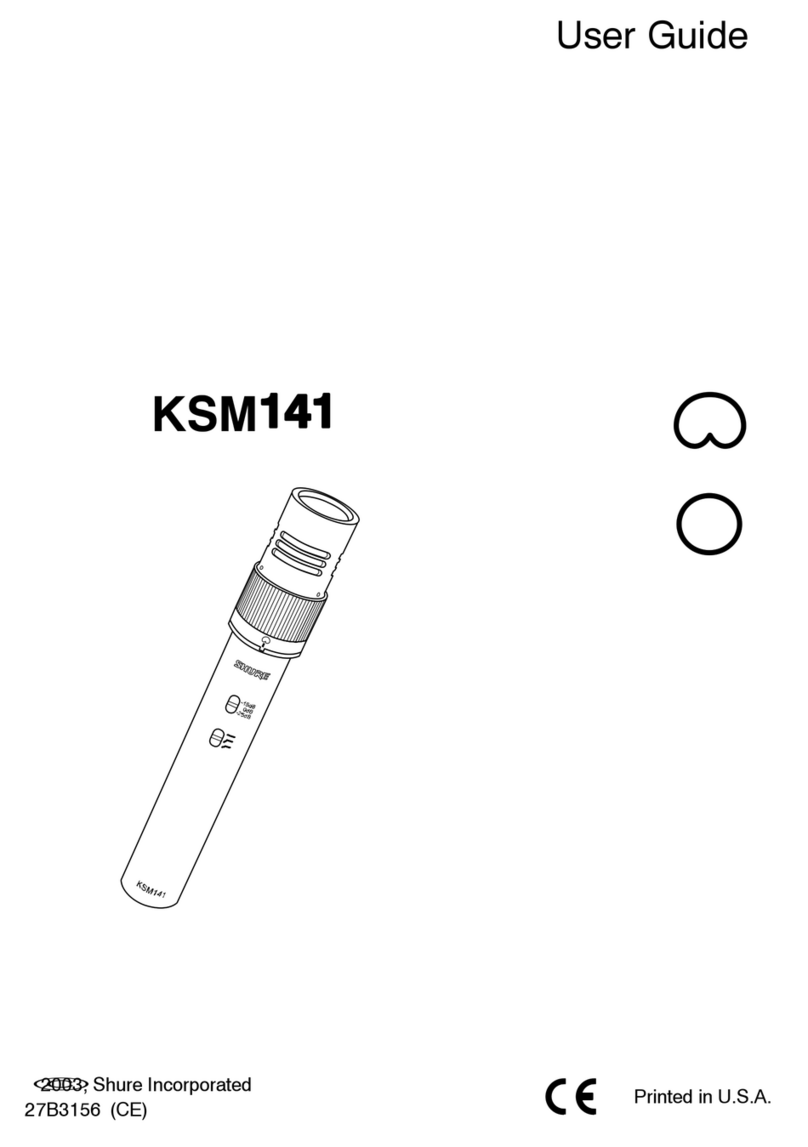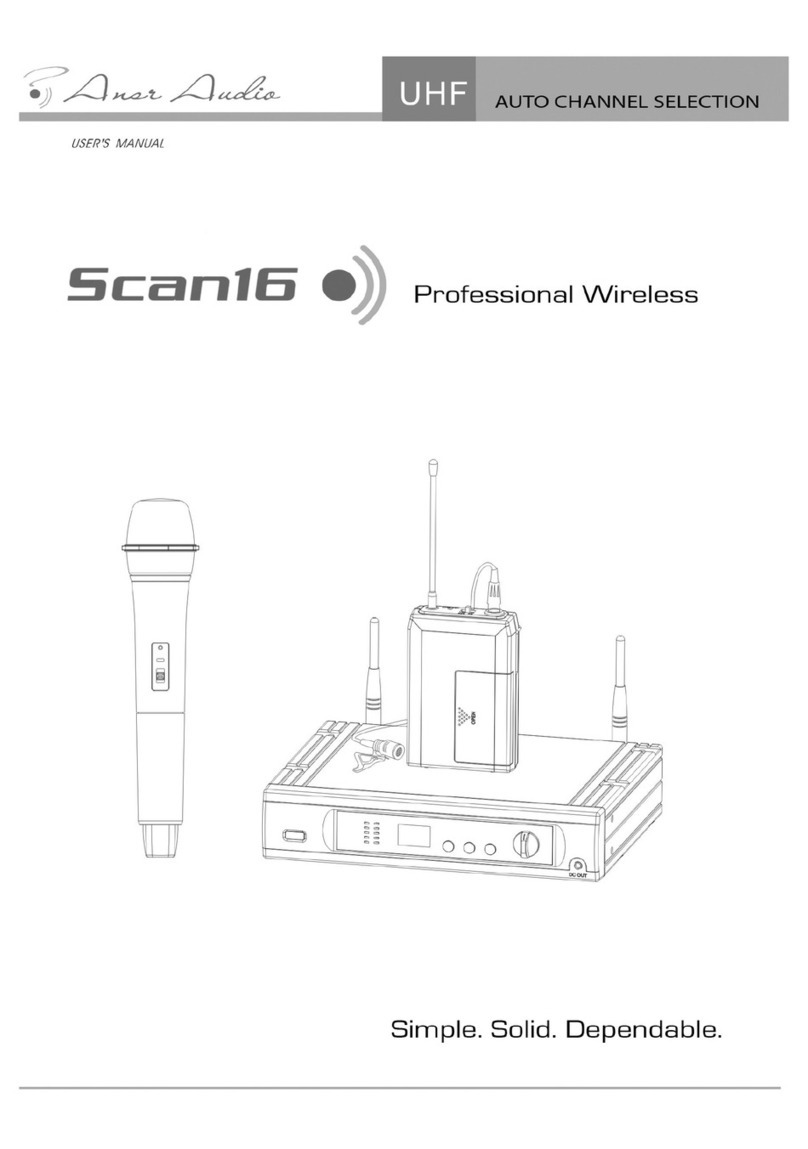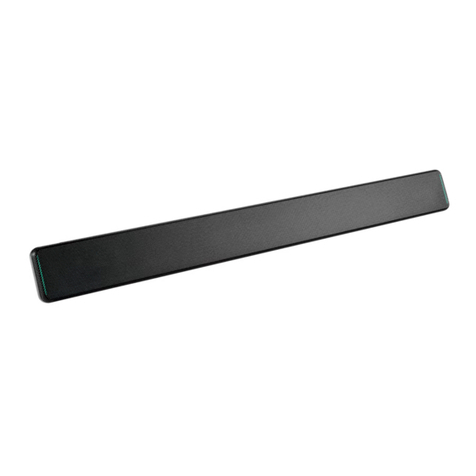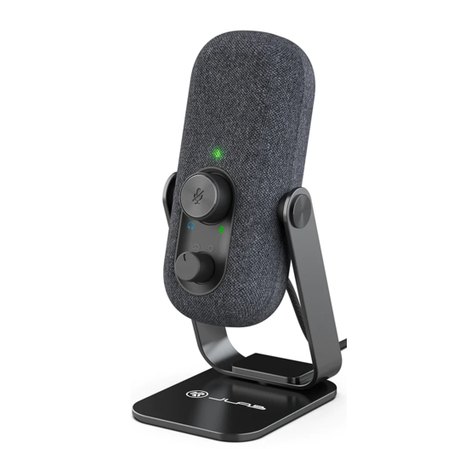
ELECTRONICS FOR SPECIALISTS ELECTRONICS FOR SPECIALISTS ELECTRONICS FOR SPECIALISTS ELECTRONICS FOR SPECIALISTS ELECTRONICS FOR SPECIALISTS ELECTRONICS
MONACOR INTERNATIONAL GmbH & Co. KG • Zum Falsch 36 • 28307 Bremen • Germany
Copyright©by MONACOR INTERNATIONAL. All rights reserved. A-0761.99.03.01.2019
00
HT
DYNAMIC WIRELESS
MI
CRO
A AA A
1
9
513
B.L
OFF ON
TXA-100HT
Ref. Núm. •Nr kat. 17.2450
Canal / Kanał MHz Canal / Kanał MHz
1 863,050 9 864,050
2 863,175 10 864,175
3 863,300 11 864,300
4 863,425 12 864,425
5 863,550 13 864,550
6 863,675 14 864,675
7 863,800 15 864,800
8 863,925 16 864,925
Mikrofon bezprzewodowy
Niniejsza instrukcja przeznaczona jest dla użyt-
kowników, którzy nie posiadają wiedzy i do-
świadczenia technicznego. Przed rozpoczęciem
użytkowania proszę zapoznać się z instrukcją, a
następnie zachować ją do wglądu.
1 Zastosowanie
Dynamiczny mikrofon ręczny z nadajnikiem wieloza-
kresowym PLL służy do bezprzewodowej transmisji
mowy/wokalu do odbiornika. Dostępnych jest 16 ka-
nałów w paśmie UHF 863–865MHz. Mikrofon oraz
nadajnik są przystosowane do współpracy z przeno-
śnym systemem wzmacniającym TXA-110.
1.1 Normy i zezwolenia
MONACOR INTERNATIONAL deklaruje niniejszym, że
bezprzewodowy mikrofon TXA-100HT spełnia wszyst-
kie wymagania normy 2014/53/UE. Deklaracje zgodno-
ści można znaleźć w Internecie, na stronie producenta:
www.monacor.com
Mikrofon bezprzewodowy nie wymaga zezwole-
nia i został dopuszczony do użytkowania w krajach
należących do Unii Europejskiej oraz Europejskiego
Stowarzyszenia Wolnego Handlu (EFTA).
2 Bezpieczeństwo użytkowania
Mikrofon spełnia wymogi norm obowiązujących w
Unii Europejskiej, posiada więc oznaczenie .
• Urządzenie przeznaczone jest do użytku jedynie w
pomieszczeniach. Należy chronić je przed działa-
niem wilgoci oraz wysokiej temperatury (zakres do-
puszczalnej temperatury otoczenia pracy: 0–40 °C).
•
Do czyszczenia urządzenia należy używać suchej,
miękkiej tkaniny. Nie wolno stosować wody ani
chemicznych środków czyszczących.
•
Jeśli mikrofon nie będzie używany przez dłuższy
czas, należy wyjąć baterie. W razie wycieku baterii
urządzenie nie ulegnie uszkodzeniu.
•
Producent ani dostawca nie ponoszą odpowie-
dzialności za wynikłe szkody (uszkodzenie sprzętu
lub obrażenia użytkownika), jeśli urządzenie uży-
wano niezgodnie z przeznaczeniem, nieprawi-
dłowo obsługiwano bądź poddano nieautoryzo-
wanej naprawie.
Po całkowitym zakończeniu eksploatacji
urządzenia należy przekazać je do punktu
utylizacji odpadów, aby uniknąć zanie-
czyszczenia śro dowiska.
Zużyte lub uszkodzone baterie/akumulatory na-
leży przekazać do punktu utylizacji odpadów lub
wyrzucić do specjalnego kontenera w sklepie z ar-
tykułami elektrycznymi (baterie można też zwrócić
producentowi).
3 Przygotowanie urządzenia do pracy
1) Należy odkręcić pokrywę (5) mikrofonu, aby uzy-
skać dostęp do komory na baterie (1) oraz prze-
łącznika kanałów (2).
2) W komorze należy umieścić dwie baterie 1,5V
AA, z zachowaniem odpowiedniej biegunowości,
zgodnie z nadrukiem w komorze.
3) Przed włączeniem mikrofonu, na odbiorniku na-
leży ustawić kanał transmisyjny wolny od zakłóceń.
4) Za pomocą przełącznika kanałów (2) należy usta-
wić ten sam kanał dla mikrofonu.
5) Należy przykręcić pokrywę (5).
6) Za pomocą przełącznika (4) należy włączyć mikro-
fon (pozycja ON). Wskaźnik stanu naładowania
baterii (3) zaświeci się na zielono. Jeśli wskaźnik
będzie się świecić na czerwono po włączeniu mikro-
fonu lub podczas jego pracy, oznacza to niski stan
naładowania baterii – należy je wówczas wymienić.
7) Po zakończeniu obsługi należy wyłączyć mikrofon
za pomocą przełącznika (4) [pozycja OFF].
4 Dane techniczne
Rodzaj urządzenia: � � � � � � � �dynamiczny mikrofon
ręczny z nadajnikiem
wielozakresowym PLL
Charakterystyka: � � � � � � � � � �kardioidalna
Zakres częstotliwości
radiowej:� � � � � � � � � � � � � � � �863 – 865yMHz, po-
dział na 16 kanałów
Moc nadajnika: � � � � � � � � � � �<10 mW (EIRP)
Stabilność częstotliwości:� � � �±0,005 %
Zakres częstotliwości
akustycznej: � � � � � � � � � � � � �50 – 18 000 Hz
Temperatura otoczenia pracy:�0 – 40 °C
Zasilanie:� � � � � � � � � � � � � � � �2 × bateria 1,5V, AA
Wymiary:� � � � � � � � � � � � � � � �⌀50 mm × 255 mm
Waga:� � � � � � � � � � � � � � � � � �257 g
Z zastrzeżeniem możliwości zmian.
Micrófono Inalámbrico
Estas instrucciones van dirigidas a usuarios sin
ningún conocimiento técnico específico. Lea
atentamente estas instrucciones antes de utili-
zar el aparato y guárdelas para usos posteriores.
1 Aplicaciones
Este micrófono de mano con emisor multifrecuencia
PLL está diseñado para la transmisión inalámbrica de
habla/canto hacia un receptor. Se puede ajustar en
16 canales en la gama UHF de 863–865MHz y es
ideal para combinar con los sistemas amplificadores
portátiles TXA-110.
1.1 Conformidad y aprobación
Por la presente, MONACOR INTERNATIONAL declara
que el micrófono inalámbrico TXA-100HT cumple
con la directiva 2014/53/UE. La declaración de con-
formidad de la UE está disponible en Internet:
www.monacor.com
El micrófono inalámbrico está aprobado para el fun-
cionamiento en la UE y en los países de la AELC; no
requiere ninguna licencia ni registro.
2 Notas Importantes
El micrófono cumple con todas las directivas relevan-
tes de la UE y por ello está marcado con .
•
El micrófono está adecuado para utilizarse sólo
en interiores. Protéjalo de goteos y salpicaduras,
elevada humedad del aire y calor (temperatura
ambiente admisible: 0–40°C).
•
Utilice sólo un paño suave y seco para la limpieza;
no utilice nunca ni agua ni productos químicos.
•
Si el micrófono no se va a utilizar durante un largo
periodo de tiempo, quite las baterías. De este
modo no se dañará el micrófono si se derraman
la baterías.
•
No podrá reclamarse garantía o responsabilidad
alguna por cualquier daño personal o material re-
sultante si el micrófono se utiliza para otros fines
diferentes a los originalmente concebidos, si no
se utiliza adecuadamente o si no se repara por
expertos.
Si va a poner el micrófono definitivamente
fuera de servicio, llévelo a la planta de reci-
claje más cercana para que su eliminación
no sea perjudicial para el medioambiente.
Las baterías descargadas no deben depositarse en
el contenedor habitual. Para proteger el medioam-
biente, llévelas siempre a un contenedor especiali-
zado (p.ej. el contenedor selectivo de su tienda).
3 Funcionamiento
1) Desenrosque la tapa (5) del micrófono. El compar-
timiento para las baterías (1) y el interruptor de
canal (2) ahora quedarán accesibles.
2) Inserte 2 baterías de 1,5V de tipo AA con los polos
positivo y negativo como está impreso en el com-
partimiento.
3) Antes de encender el micrófono, ajuste el receptor
correspondiente en un canal de transmisión libre
de interferencias.
4) Ajuste el micrófono en el mismo canal con el inter-
ruptor rotatorio (2). Atornille la tapa (5) de nuevo
en el micrófono.
5) Encienda el micrófono con el interruptor corredero
(4) [posición ON]. El LED de batería (3) se ilumina
en verde. Si se ilumina en rojo tras el encendido o
durante el funcionamiento, las baterías insertadas
están casi descargadas y deben ser remplazadas.
6) Tras el funcionamiento, ajuste el interruptor corre-
dero (4) en OFF para apagar el micrófono.
4 Especificaciones
Tipo de aparato: � � � � � � � � micrófono de mano
dinámico con emisor
multifrequencia PLL
Características de
captación: � � � � � � � � � � � � � cardioide
Rango de frecuencias radio: 863 – 865 MHz,
dividido en 16 canales
Potencia de transmisión: � � < 10 mW (EIRP)
Estabilidad de frecuencia: � ±0,005 %
Rango de frecuencias audio:50 – 18 000 Hz
Temperatura ambiente: � � � 0 – 40 °C
Alimentación: � � � � � � � � � � dos 1,5V pilas tipo AA
Dimensiones:� � � � � � � � � � � ⌀50 mm × 255 mm
Peso:� � � � � � � � � � � � � � � � � 257 g
Sujeto a modificaciones técnicas.
EspañolPolski

